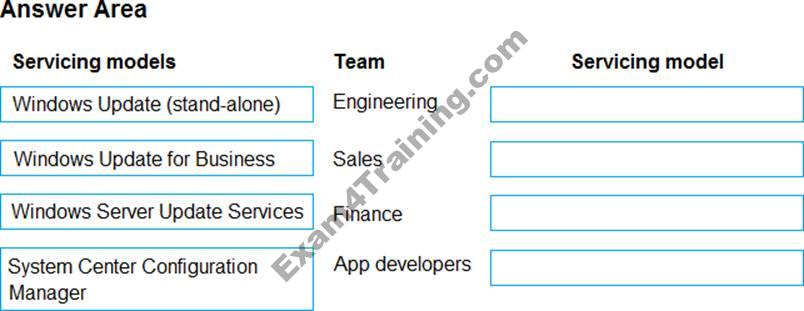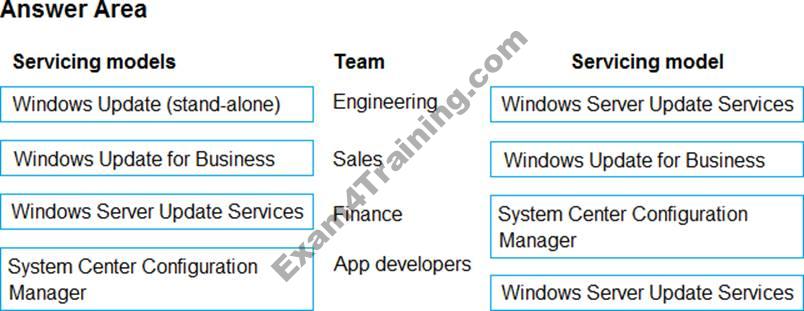A company plans to migrate from a Microsoft volume licensing model to a subscription-based model
DRAG DROP
A company plans to migrate from a Microsoft volume licensing model to a subscription-based model.
Updates to devices must meet the following requirements:

You need to recommend the appropriate servicing models to update employee devices.
To answer, drag the servicing model from the column on the left to its component on the right. Each model may be used once, more than once, or not at all. NOTE: Each correct selection is worth one point.

Answer: 
Explanation:
References:
https://docs.microsoft.com/en-us/windows/deployment/update/waas-overview#servicing-tools
Latest MS-900 Dumps Valid Version with 202 Q&As
Latest And Valid Q&A | Instant Download | Once Fail, Full Refund


WSUS CAN update 3rd apps through WSUS API, you have to build your package to do this.
WSUS CANNOT monitor devices status
1) WSUS
2) WUfB ( cause centralized manages updates )
3) SCCM ( cause updates and monitors all-in-one software )
4) WU ( cause you can specify when update )
Windows Server Update Services (WSUS)
Windows Update for Business
SCCM (Configuration Manager)
Windows Update (stand-alone)
I think this make more sense:
Engineering: SCCM -> applications are not updated from WSUS but you control this from SCCM
Sales: WUB -> Cloud based controlled
Finance: WSUS -> WSUS is one system and parodically updated
Developers: Windows update (stand alone) -> up to the and user itself